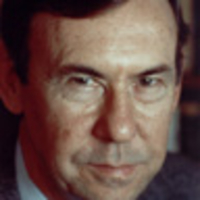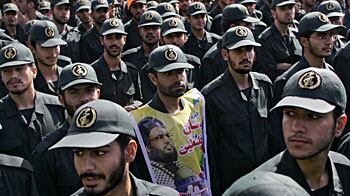
Iran is at a revolutionary juncture, one of those hinge moments in history when an explosion of actions and debates produces towering outcomes—often unintended—that bend the course of events the way a black hole in space bends a beam of light. In the tumult of these moments, it is almost impossible to know how it will end; only in retrospect does the outcome appear inevitable.
This hinge moment began on 22 Khordad—June 12 on the Western calendar—the date of Iran’s electoral debacle. On that date, all the old rules changed and a new set of rules began to be devised. There is evidence of deep political fissures among the ruling elite and signs of fierce debate. At the moment, Iran’s political leadership finds it convenient to pretend that all is as before. But in fact, there has been a political earthquake and the Iranian Revolutionary Guard Corps is moving to consolidate its power. Before it is over, we may see a new strongman emerge from the military, as has happened in so many other countries in the Middle East and elsewhere when the political status quo was shattered and everything was in flux.
Before it is over, we may see a new strongman emerge from the military, as has happened in so many other countries in the Middle East and elsewhere when the political status quo was shattered and everything was in flux.
Iran, of course, has experienced such hinge moments before: notably the 1979 collapse of the shah and the replacement of his monarchy with a revolutionary Islamic government. Its effects extended far beyond the borders of Iran. I was in the White House at the time when Iran invaded the American embassy in Tehran and held its occupants prisoner for 444 days. That action arguably insured the defeat of President Jimmy Carter and the election of Ronald Reagan. It also indelibly imprinted an image of a fanatical, hostile Iran on the psyches of Americans who watched it play out as the first major U.S. foreign policy crisis to be televised live and broadcast into the living rooms of every family in the United States.
Part of the problem that Washington had in attempting to negotiate an end to that deadly dispute was the absence of an address in Iran. We knew that the hostages had been taken by a group of radical students; we knew that the revolutionary regime had thrown its support to the students; we knew that the supreme revolutionary authority was Ayatollah Khameini, but he would not talk to us, and the Iranians who did talk to us proved to have no real authority.
Today I am experiencing a back-to-the-future moment.
The election debacle on 22 Khordad was in my view the final, bungled stage of what was intended to be a gentle coup propelling the Iranian Revolutionary Guard Corps, the pasdaran, into a position of unassailable power behind the scenes. The amazing rise of the Green Movement, under the almost accidental leadership of Mir Hossein Moussavi and later Mehdi Karroubi, threatened to upset these plans, and panicked efforts to prevent it brought the pasdaran out of the shadows and into the full glare of international attention.
The pasdaran had begun playing an overtly political role a full decade earlier. Its insinuation into the economy of Iran had been widely observed for years. It also controlled the nationwide paramilitary force known as the basij. Its association with a radical faction of Iranian clerics, led by Ayatollah Mesbah Yazdi, who preached that the word of the Supreme Leader in Islamic Iran was absolute—the very voice of God—was well known. But the election of 22 Khordad propelled the pasdaran into an active role in domestic politics, just as it forced Ayatollah Khamenei, the Supreme Leader who is supposed to remain above politics, to align himself with a specific political faction and thereby sacrifice his legitimacy as an objective arbiter.
I am personally convinced that the Revolutionary Guard Corps is now rapidly becoming the dominant force in Iranian politics—greater than President Ahmadinejad, and greater even than Ayatollah Khamenei himself, though the pasdaran and others continue to pay lip service to his “leadership.” I base this judgment, among other things, on the fact that senior leaders of the pasdaran no longer have any compunction about taking positions that differ from those of the President or the Supreme Leader; yet neither the President nor the Supreme Leader ever dare disagree with the pasdaran. But if that is true, who exactly is calling the shots?
The political decision-making apparatus of the pasdaran is totally opaque. It is possible to conjecture a circle of dogmatic officers together with a narrow faction of clerical advisers who share a belief in the divine right of rulers. But it is impossible to give a list of the members of this circle, let alone the process by which they arrive at policy positions.
This uncertainty is what reminds me of the days of the revolution and the murky operations of what was then the Revolutionary Council. The U.S. government spent a tremendous amount of time and effort during the hostage crisis trying to identify the key members of the Revolutionary Council and to develop channels for communicating with this central policy-making body.
The results were less than satisfactory, partly no doubt because the group was itself a mirror image of the political chaos after the Iranian revolution. The Council had a fairly well established membership, but influence on specific policies varied from one moment to the next according to the shifting political winds, and there was no reliable process by which decisions were taken and implemented. There was, in short, no reliable address where a U.S. initiative might be registered and acted on.
It is 30 years later, and we have arrived at another hinge moment in history. And the Obama administration has a serious problem, scarcely discussed but eerily familiar. How do you engage with Iran when there is no reliable address in Tehran?
Gary Sick served on the National Security Council staff under Presidents Ford, Carter and Reagan. He was the principal White House aide for Iran during the Iranian Revolution and the hostage crisis and is the author of two books on U.S.-Iranian relations. Mr. Sick is a captain (ret.) in the U.S. Navy, with service in the Persian Gulf, North Africa and the Mediterranean.






